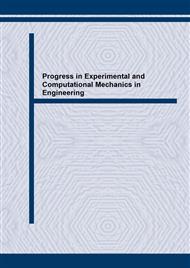[3]
3 -1-0.8-0.6-0.4-0.200.20.4 strain (%) peak energy (eV) tensile compressive Relaxed In0.08Ga0.92N strain due to growth on GaN 30 K PL Peak Energy of Strained & Unstrained In0.08Ga0.08N QWs AlInGaN/InGaN QWs provide: Higher luminescence efficiency than their GaN/InGaN counterparts (~3X higher). Ability to emit light at lower wavelengths than GaN/InGaN QWs with the same %InN. Application in high-efficiency visible and UV light sources. 30 Å QWs 90 Å QWs AlInGa N cladding AlInGaN cladding Multiple InGaN QWs 0 20 36 0 3 80 4 00 42 0 44 0 4 60 w a vele n gth (n m ) intensity (a.u.) 10 5 15 GaN/InGaN/GaN compressive strain Q/TQ "unstrained" Q/T/Q compressive strain Q/T/Q tensile strain 30 K PL Intensity of Strained & Unstrained In0.08Ga0.08N QWsStrain Effects Figure 6 Well a < 0.1 µµµµm Barrier Barrier Heisenberg's uncertainty principle: ∆x ∆p > h 4π � �Ek� > h 32πm( ∆x)2 • Delivers more gain per injected carrier o lower threshold currents o generating more power De Broglie relationship: λ = h p • Ability to vary the lasing wavelength merely by changing the width of the quantum well Duality of particles and waves: λ = 2 3a energy → a λ = 2a λ = a a me v ∆x ≤ a p = mev Quantum Well (QW) ((QW)
Google Scholar


